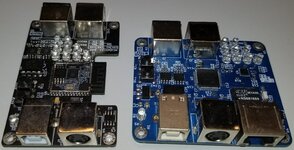Phipli
Well-known member
Cheesey included a USB Micro port to power it using a USB charger, it doesn't specifically need ADB, that was just for convenience.Hi all,
has anyone used the device on a mac plus? If yes, how do you power it? Can we steal some power from e.g. floppy drive connector?
@cheesestraws do you believe it would be ok to solder a wire on the usb +5v terminal and feed it to the floppy drive connector? Would it be already grounded or would in need an additional wire for ground?
Many thanks,
Andrew

